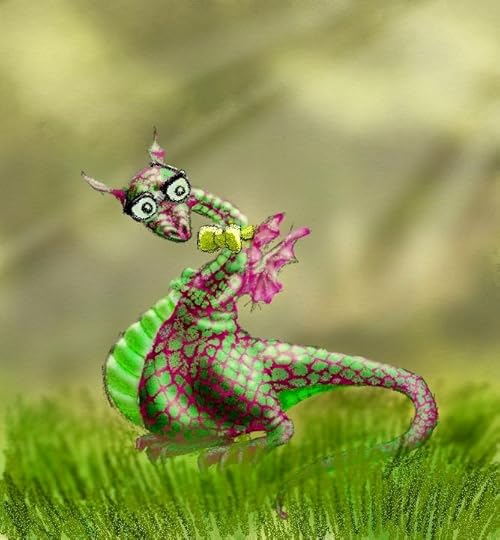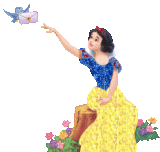Trisha Sugarek's Blog, page 124
August 12, 2012
Writer shares a little wisdom…
Going home………to Ireland 1998
Today at 4:30pm EST my wisdom (such as it is) was posted again on Care2.com with 20,000,000 members. If you missed it in July, here it is again.Now keep in mind that I still consider myself a small town girl, stumbling through this life as best I can. But, if I reach out and touch just one other woman and make her life a little easier, I am content.
August 9, 2012
Does anyone out there love “Stanley, the dragon….”?
Two great kids are ‘professional reviewers’ with their Mom. They loved Stanley so I thought I would reprint it here for you to enjoy. Or click below and read it in its original location:
http://www.readerviewskids.com/ReviewSugarekStanleyStalwartDragon.html
READER VIEWS, Reviews by kids, for kids Stanley, the Stalwart Dragon: The Fabled Forest Series (Volume 1) Reviewed by Sophia (age 6.75) and Madeline (age 8.5) McElroy for Reader Views (12/09)
Sophia: I liked this funny story about a dragon named Stanley. He ran away from home, because he couldn’t breathe fire. He found himself in a forest full of creatures – fairies, elves and animals. He made a lot of new friends, until one day when a bad raven came along named Slick; he talked Stanley into going to join the circus. After his friends found out he had run away again the Queen sends them on a mission to rescue poor Stanley.
My favorite part is when Cheets the elf yells “dragon breath!” and starts running around and keeps yelling. My favorite picture is when Stare is on top of Stanley’s head with big saucer eyes!
My favorite characters are Stare and Stanley. Even though Stare only knows the word “Who?, or Who!, or Who! Who! Who!,” I really like him because he is cute and funny. I like Stanley, because he was a kind dragon who didn’t like to burn things up. I think this would be a really good movie!
Madeline: This is an amusing story about Stanley the dragon. This story will take you on many adventures, including some with a nutty little elf named Cheets, a Queen named Cleo who rules over the faeries in the forest, and Stanley who will be the cause of all these exciting tales. Stanley is not your ordinary dragon; he is quite interesting and friendly. Stanley decided to run away from home, because he wouldn’t breathe fire and this was a big disappointment to his parents, especially his Father. Stanley finds himself in a magical woods filled with farires.
The happiest moment in the story was when the Queen ordered the rescue of Stanley. I enjoyed this part of the story, because of the plan his friends had to save him from his trouble again. My favorite character is Cheets the elf, because he is crazy and funny. He always talks about himself in the third person! When he gets too carried-away the Queen “snaps” him into a time-out, of which he had many. This is a very enjoyable fairytale.
Parent: What a delightful story! I loved reading this with the kids. At times I was tempted to copy the pages so we could read it as a play. The characters are really sweet and it has a running dialogue of positive messages. I would highly recommend “Stanley, the Stalwart Dragon” by Trisha Sugarek to all parents.
Do you like free stuff? Read “Stanley, the Dragon” FREE
 Offering a promotion to read “Stanley, the Stalwart Dragon” for FREE August 10, –August 14, 2012. Go to Amazon.com’s Kindle KDP Select Don’t miss this opportunity. Go to Kindle’s “Lending Library” at the link above.
Offering a promotion to read “Stanley, the Stalwart Dragon” for FREE August 10, –August 14, 2012. Go to Amazon.com’s Kindle KDP Select Don’t miss this opportunity. Go to Kindle’s “Lending Library” at the link above.
Synopsis: Stanley, a very young dragon, has run away from home. He feels that he is a failure. As dragons go, he probably is. He’s kind, soft spoken, a good friend and can’t for the life of him, breathe FIRE! The story is full of wonderful characters. A lady bug, named Persnickety is Stanley’s best friend and side kick. Emma, an earthling girl who lives on a farm and plays in the forest, with her magical friends. The loveable villain is a raven named City Slick, the Third. Thomas, the pedantic, sea turtle, and Cheets, the elf, are just a few of Stanley’s new friends.
One dark night Slick lures Stanley away from the forest and sells him to the circus. He is left chained, alone in a tent, until he breathes fire. The Queen of the Faeries gives Donald and Emma a quest; to go and find Stanley and rescue him.
While this is an adventure story full of laughter, it teaches children that no matter what, it is never a good idea to run away from home and is frequently very dangerous. The fable addresses bigotry, greed, loyalty and kindness to others. Ages: 2–12
August 6, 2012
Want more free stuff? Read FREE! “Women outside the Walls”
Amazon.com’s KDP Select is offering a promotion to read “Women Outside the Walls” for FREE August 8, –August 11, 2012. Don’t miss this opportunity. Go to Kindle’s “Lending Library” at the link above at Amazon.com.
Synopsis: “Women Outside the Walls”
Alma, Kitty and Hattie have one thing in common. The men they love and married are in prison.
Women who marry regular guys, who have children and work jobs. Then their men make a bad decision that leads their women to serving ‘hard time’ on the outside. Wives visit their men behind bars every day wondering how their lives brought them to this place. Alma is an exotic dancer. Hattie is a hard working African American with four children. And Kitty, a wealthy socialite, who in spite of the shame of going to a prison where her husband refuses to see her, doggedly visits every week. In a series of flash backs we explore the lives of these women before their men were incarcerated; when they lived normal lives with their husbands and children. The plot explodes when one of their daughters disappears and an inmate makes a desperate move towards freedom.
FreshFiction.com says this is a book not to be missed!
Read 4 FREE! “Women outside the Walls”
Amazon.com’s KDP Select is offering a promotion to read “Women Outside the Walls” for FREE August 8, –August 11, 2012. Don’t miss this opportunity. Go to Kindle’s “Lending Library” at the link above at Amazon.com.
Synopsis: “Women Outside the Walls”
“Charlie, the last time you kissed me like that and then pushed me away, I didn’t see you for over two years. Make sure you show up tomorrow, Bub!”
Alma, Kitty and Hattie have one thing in common. The men they love are in prison. Wives visit their men behind bars every day and wonder how their lives brought them to this place.
This story focuses on three of these women. Alma is an exotic dancer who seems, at first glance, to be a bit of a nit-wit. But on closer inspection she has a street-smart wisdom and humor. Hattie is a hard-working, African American woman with four children who is trying to keep her family together. Then there is Kitty, a wealthy socialite, who in spite of the shame and embarrassment of visiting a prison where her husband refuses to see her, doggedly visits every week.
In a series of flash backs we explore the lives of these women when they lived normal lives with their husbands and children. The plot explodes when Chelsea, Alma and Charlie’s daughter, disappears. One visiting day something happens that will change each of their lives forever as the visiting room erupts with violence and heartbreak. Charlie takes the socialite hostage and threatens to kill her if he is not let out to find his daughter.
FreshFiction.com says this is a book not to be missed!
Let Others Inspire your work as a Writer (part 1)
 One day recently I stumbled across the true story of a young entrepreneur who didn’t let his age, or nay-sayers, or haters stand in his way. I was so inspired by this young man and his courage to be different, a play script was born. Since I was writing my series of short plays/small casts, it was a perfect fit (pun intended) to write a one act play about this subject.
One day recently I stumbled across the true story of a young entrepreneur who didn’t let his age, or nay-sayers, or haters stand in his way. I was so inspired by this young man and his courage to be different, a play script was born. Since I was writing my series of short plays/small casts, it was a perfect fit (pun intended) to write a one act play about this subject.
Synopsis: Favorite thing to wear? Orange socks. Ever since Henry was old enough to wear socks, rain or shine, he would take them off at the first opportunity…..unless they were orange. So his mother dyed all of his socks orange. Now at age fourteen, Henry has a school project in social studies. Create and market a product for the school’s business Fair. The obvious choice? Orange Socks. So he asks his mother, who is a knitter, to teach him how to knit socks. Little does Henry and his mother know but this is just the beginning of Henry’s business career. 1f. 1m.
August 4, 2012
Why do we write poetry?….nobody reads it!
Can someone tell me why we continue to write poetry? Nobody seems to read it anymore. The section for poetry in the book stores practically has cobwebs hanging from the shelves.
And yet, we still write it. I discovered that certain people, events, animals, scenes, emotions will command me to write (my style of) poetry when a story or play just won’t do.
[image error]One of my more lengthy pieces was about rain (the Rain Essays)….because I noticed how different species react to it. Here’s a sample:
‘…The dog romps through the rain, in his perfect raincoat, oblivious to the wet. Blinking owlishly when a drop falls into his eye
Mysterious primates of the forest sit beneath the umbrella leaf staring forlornly out at the storm Forever patient as the skies rupture with a torrential deluge, human-tender eyes reflect their disgust and sadness at the wet, messy coats they must wear
The equine turn their haunches to the storm to show their scorn for nature’s tantrum
Cats run for cover, then distainfully sit removing the wet rain from their person with a wet tongue
Wild fowl dance across the circle patterns of the pond’s face, beating their wings and singing They frolic and dive celebrating the sublime circumstance of being wet
Man spends energy and money to keep himself dry and safe from the rain, darting from doorway to doorway, bearing designer umbrellas. What does he fear? He won’t melt if he gets soaked, he won’t become ill or grow fins, and he just might get clean….’ (c)
August 2, 2012
Take a risk with your writing
 So my series hasn’t even been on amazon.com for a week and I am experiencing sales. Why am I telling you this? Well, it was sort of an experiment; publishing a series of single one act scripts……..
So my series hasn’t even been on amazon.com for a week and I am experiencing sales. Why am I telling you this? Well, it was sort of an experiment; publishing a series of single one act scripts……..I can’t tell you how exciting this is…..’Keep it simple, stupid’ , seems to be working for me.
I guess what I’m trying to say to other writers is take a risk, try a new idea, challenge yourself and your writing. What have you got to lose? Currently there are ten of these short, one act plays. With more to come.




August 1, 2012
Where did our fairy tales come from? [2 of 3 of series]
While writing Bertie, the Bookworm and the Bully Boys, several characters from our time honored fairy tales wander through my fabled forest. I wanted to know where these stories came from originally and what I found was fascinating. Thought my readers might enjoy some of the background as much as I did.
The Brothers Grimm (1785 – 1863) were German academics, cultural researchers, and authors who together collected folklore. They are among the most well-known storytellers of Europe. Their work popularized such stories as “The Frog Prince” (Der Froschkönig), “Hansel and Gretel” (Hänsel und Gretel), “Rapunzel“, “Rumpelstiltskin” (Rumpelstilzchen), and “Snow White” (Schneewittchen).  Their first collection of folk tales, Children’s and Household Tales (Kinder- und Hausmärchen), was published in 1812. During his life time the master animator, Walt Disney [1901-1966] adapted the ancient fables to film.
Their first collection of folk tales, Children’s and Household Tales (Kinder- und Hausmärchen), was published in 1812. During his life time the master animator, Walt Disney [1901-1966] adapted the ancient fables to film.
Through the centuries the stories have been ‘cleaned up’. For example in one of the earlier versions of Cinderella the glass slipper was filled with the blood and toes of the wicked stepsisters. Not really something we would want to read to our children today. I left it out of my fabled forest stories.
more about where our fairy tales came from next week…..please check back. Part 1 can still be found here in older postings.
July 31, 2012
“Must Read” rating for “Stanley, The Stalwart Dragon”
BookReview.com gave the first in the Fabled Forest series, “Stanley, the Stalwart Dragon“ a wonderful review. Head over to their site to see it, or read on below!







Children’s Books
Title: Stanley, The Stalwart Dragon
Author: Trisha Sugarek
Rating:



 Must Read!
Must Read!Publisher: CreateSpace
Reviewed by: Eric Jones


Trisha Sugarek is often known for her stage plays for children which take on a fun, but instructional tone and lend children an eye-opening narrative on the problems and decisions that come with growing up. Her first novel, “Stanley, the Stalwart Dragon”, is an extension of her stage work. Fully illustrated by Mitchell Lamar Larkins, it is a collection of life lessons rolled into a single journey, with a loveable protagonist who finds friendship and hardship out in an unfamiliar world. Stanley is very different from other dragons because he doesn’t blow fire. No, he blows bubbles. This leads him to feel ostracized with the dragon community and in a fit of anger he runs away to the woods where he’s greeted by a band of mixed races; elves, pixies, animals, clowns, and faeries all gather to remark on Stanley’s mysterious condition. What’s remarkable about Sugarek’s fiction is in her ability to draw depth into what might have simply been cartoon characters. City Slick is, without a doubt, my favorite. He has the sly veracity of a huckster, but appears genuinely friendly. He’s also illustrated to resemble Woody Wood Pecker, and although he’s not quite the villain, he plays the role of a trickster who gets Stanley into his predicament by convincing him to join the circus. Stanley moves then from a nice group of misfits to a bad group of misfits, and learns a strong lesson in comparing the two. There is no shortage of fun and interesting characters to grab children’s attention and engage their imagination. Being a playwright, Sugarek comes from a medium that’s heavy on dialog, and that transitions well into children’s fiction, making “Stanley, the Stalwart Dragon” a great book to read out loud to children. Parents can change voices to represent different characters, or they can highlight character’s lines that the children themselves can play. This is a novel, so there’s a slight issue of length. It’s best read as a serial over a number of nights rather than straight through, although the appearance of the book can be deceptive since it’s about the same height and width as children’s books like “Polar Express” or “Green Eggs and Ham”. However, Sugarek makes no bones about it being more advanced. She uses big words to stimulate her young readers such as ‘effervescent’, or ‘rhetorical’, which is a method reminiscent of the works of Roald Dahl. “Stanley, the Stalwart Dragon” is a captivating children’s novel from start to finish, a cartoonish romp through a fantastic world that’s full of jokes and lessons that will ensnare any child’s ear.




